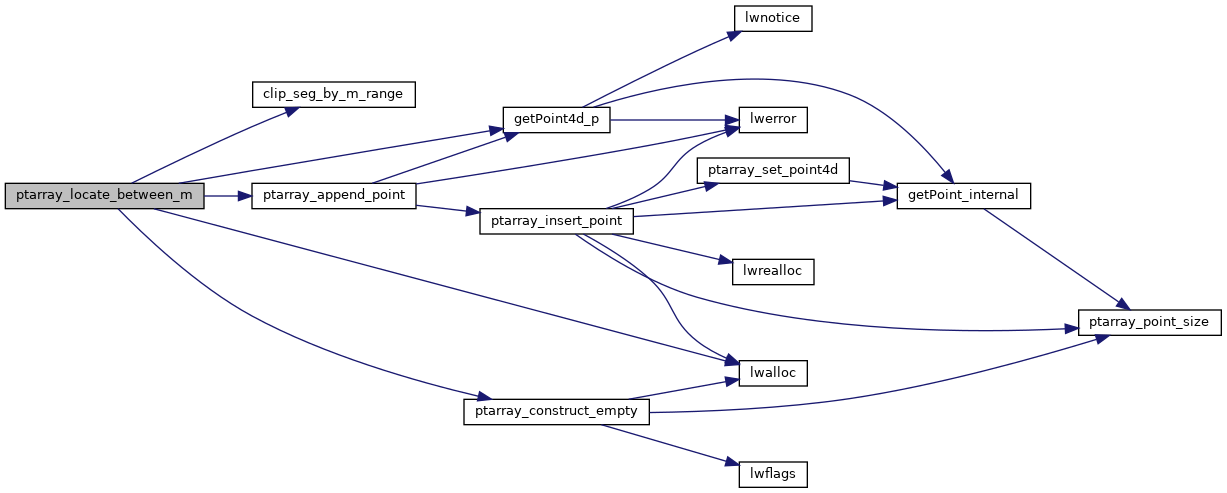◆ ptarray_locate_between_m()
|
static |
Definition at line 436 of file lwgeom_functions_lrs.c.
475 POSTGIS_DEBUGF(3, " clipped to: [ %g %g %g %g - %g %g %g %g ] clipval: %d", p1.x, p1.y, p1.z, p1.m,
482 POSTGIS_DEBUGF(3, " 1 creating new POINTARRAY with first point %g,%g,%g,%g", p1.x, p1.y, p1.z, p1.m);
484 dpa = ptarray_construct_empty(FLAGS_GET_Z(ipa->flags), FLAGS_GET_M(ipa->flags), ipa->npoints-i);
POINTARRAY * ptarray_construct_empty(char hasz, char hasm, uint32_t maxpoints)
Create a new POINTARRAY with no points.
Definition: ptarray.c:59
int getPoint4d_p(const POINTARRAY *pa, uint32_t n, POINT4D *point)
Definition: lwgeom_api.c:125
int ptarray_append_point(POINTARRAY *pa, const POINT4D *pt, int allow_duplicates)
Append a point to the end of an existing POINTARRAY If allow_duplicate is LW_FALSE,...
Definition: ptarray.c:147
static int clip_seg_by_m_range(POINT4D *p1, POINT4D *p2, double m0, double m1)
Definition: lwgeom_functions_lrs.c:303
Definition: liblwgeom.h:399
Definition: lwgeom_functions_lrs.c:261
Definition: liblwgeom.h:412
References clip_seg_by_m_range(), POINTARRAY::flags, FLAGS_GET_M, FLAGS_GET_Z, getPoint4d_p(), LW_FALSE, LW_TRUE, lwalloc(), POINT4D::m, POINTARRAY::npoints, POINTARRAYSET::nptarrays, ptarray_append_point(), ptarray_construct_empty(), POINTARRAYSET::ptarrays, POINT4D::x, POINT4D::y, and POINT4D::z.
Referenced by lwline_locate_between_m().
Here is the call graph for this function:

Here is the caller graph for this function:
